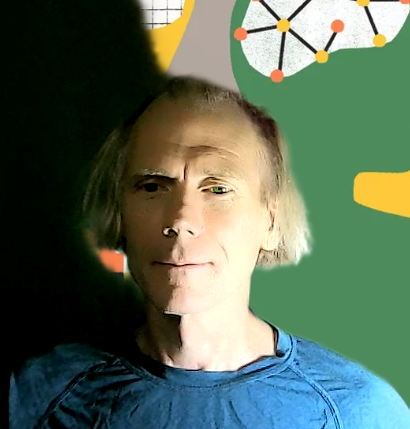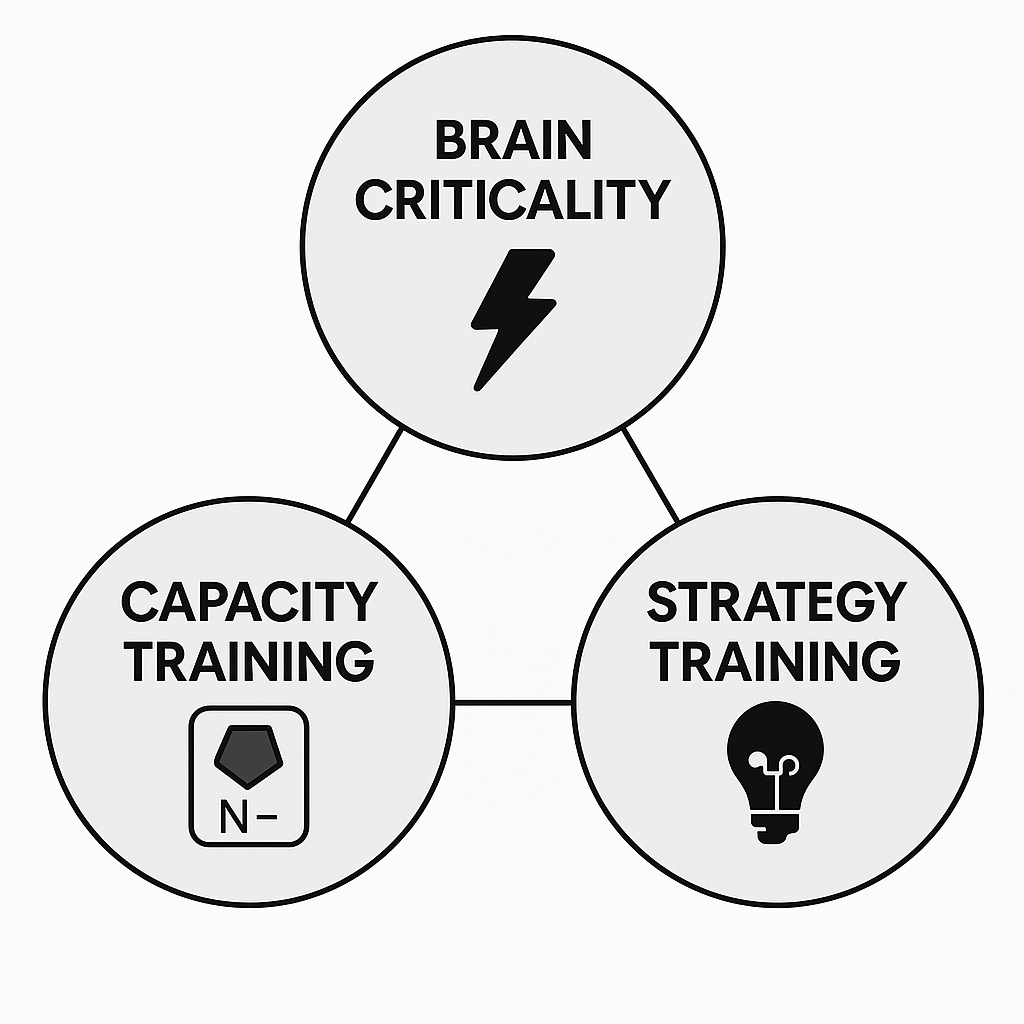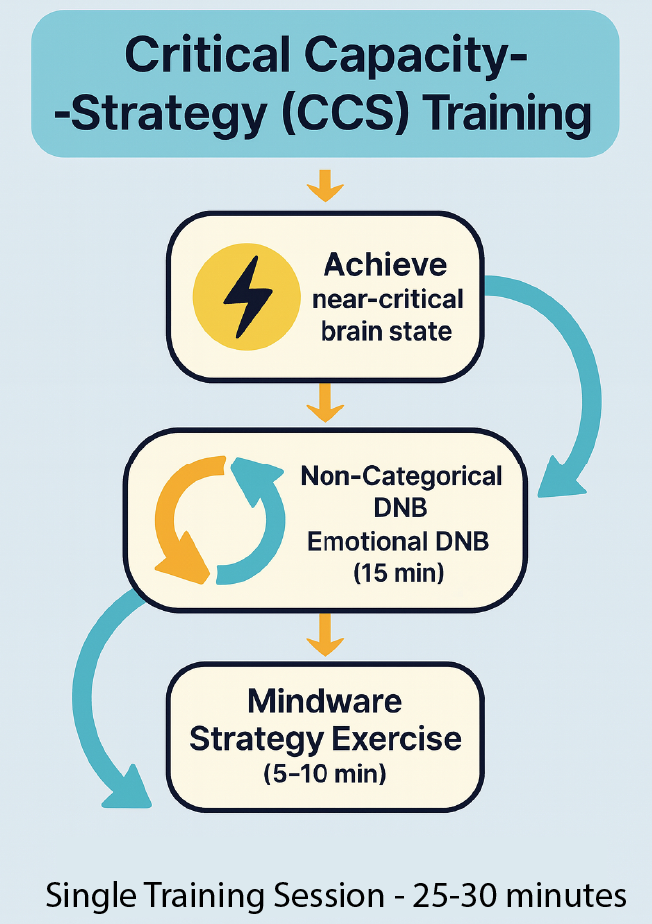Overview of the Training Program

Welcome! This programme is built on three simple pillars - being in a brain-critical state, n-back capacity training and cognitive-map strategy training — all grounded in the Trident G theory of intelligence.
Defining Intelligence: Fluid Intelligence (g) + Cognitive Resilience (r)
Fluid intelligence (g): your capacity to reason with new information — solving puzzles or unfamiliar problems, as well as your working memory capacity and attention control.
Cognitive resilience (r): your ability to bounce between rigid control and creative flexibility, recovering from setbacks and adapting under stress, as well as being able to rely on automatic skills that are well-trained for efficiency.
Genera Adaptive Intelligence (G) = g × r
3 Pillars of Training


N-Back Capacity Training
Each day you’ll spend 20 minutes on a dual n-back variant that targets different oscillatory “forks” in the Trident G model, expanding working-memory updating and attentional control.
Strategy (Mindware) Training
Immediately after n-back, you train one spatial or graphical strategy (e.g. node-branch maps, frequency grids, Venn diagrams). These externalise relations into a map format, engaging your hippocampus and boosting far transfer to real-world reasoning.
Creative vs Control Modes
Our brains operate along two complementary modes:
Control Mode (Stability):
• Focused, precise processing—ideal for consolidating new skills, verifying solutions and executing well-practised routines.
• Recruits “stability” circuits (D₁-dopamine tagging) to sharpen accuracy and avoid distractions.Creative Mode (Flexibility):
• Exploratory, broad processing—necessary for generating hypotheses, brainstorming strategies and adapting when the usual approach fails.
• Engages “flexibility” circuits (D₂-dopamine tagging) to expand your search and discover novel solutions.
Why toggle?
Good problem-solving demands both: use control to confirm and refine, then switch to creative to break out of dead ends and innovate. The Trident G drills explicitly train you to move fluidly between these modes. When a strategy isn't working, let go, and switch strategies.
From Fluid Reasoning to Crystallised Mastery (Gf → Gc)
Learning any new strategy follows two phases:
Acquisition (Gf):
• Initial exploration—testing, error-driven updates, hypothesis generation.
• Heavy reliance on working memory and fluid reasoning to grasp novel concepts.Consolidation (Gc):
• Automated skill—fast retrieval of strategies, little effort, high reliability.
• Transition from effortful “thinking about thinking” to seamless execution.
How we build Gc:
Daily practice of each strategy, immediately after n-back, cements the skill.
Regular checkpoints (game performance + quick quizzes) ensure no concept slips through.
Integration sessions (Days 21–24) force you to weave strategies together, forging a unified, transferable toolkit.
Your 24-Day Session Pattern
This diagram shows how your training should be conducted each day.
Being in a 'near critical' brain state means try to train when you are feeling fresh and alert and flexible mentally. Don't train when you are burned out or stressed or feel unmotivated.

What strategy training is in this course?

What Improvements to Expect

We’ll administer these tests at regular intervals to track your progress scientifically.